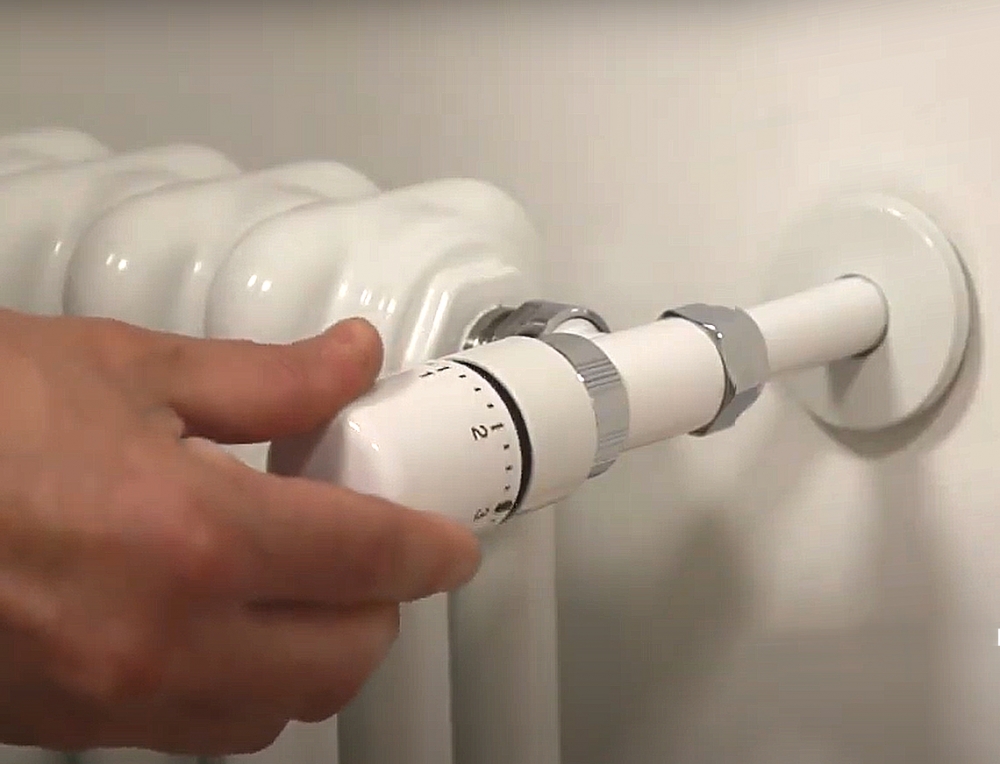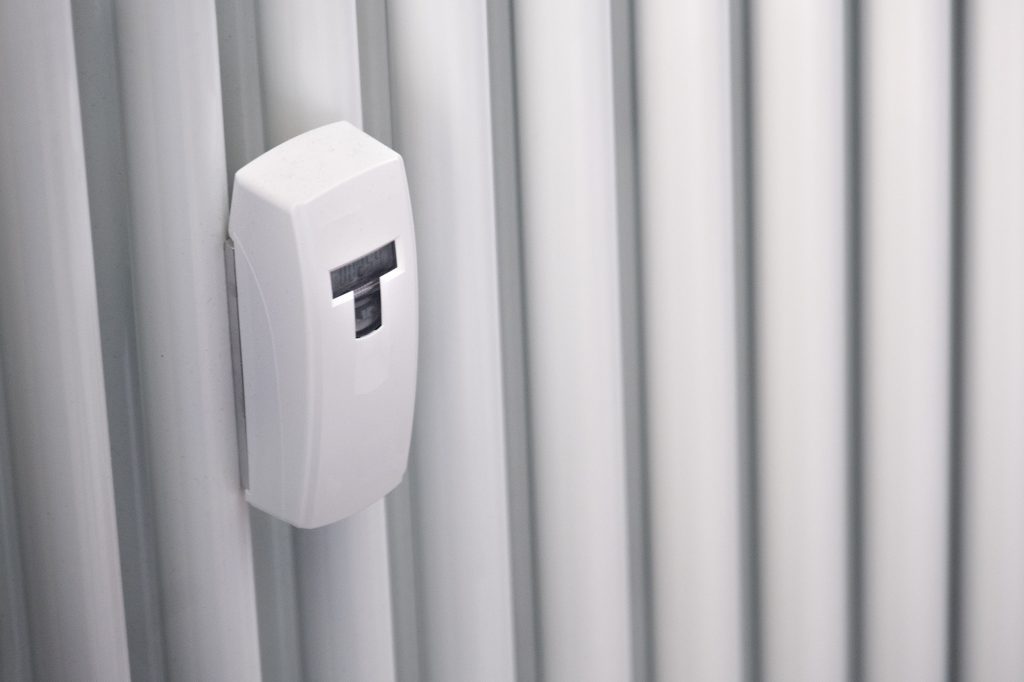
Radiator valves: what they are and how to choose them
Radiator valves are devices used to adjust the flow of hot water, depending on the temperature we choose to have in our rooms. Thermostatic valves also have the advantage of being easy to install, without any wasting energy.
Let's find out how to choose the best valves for our radiators and how to take advantage of their functions, reducing consumption and increasing comfort.
What are thermostatic valves?
Thermostatic valves for radiators are those mechanisms that regulate the flow of hot water inside radiators and heating systems. There are two categories of thermostatic valves, depending on how they work:
- traditional thermostatic valves, with a mechanical functioning;
- intelligent or smart thermostatic valves, with new generation electronic controls.
Let's see specifically how they work and what are the elements that distinguish the different types of radiator valves.
How do traditional thermostatic valves work?
Thermostatic valves or traditional thermo valves are manual valves that are installed on radiators to regulate their heat, varying the temperature and power.
They work in a simple way: through a control knob, the valve regulates the flow of water into the radiator.
A control knob is connected to each thermostatic valve, which usually has a graduated scale with values that go from 0 to 5. Depending on the value we select, we get a certain temperature:
- if we set the radiator valve to 0, for example, the shutter closes and the radiator is inactive and therefore it is turned off;
- if instead we select the value 5, the radiator valve is completely open and the radiator works at its maximum power.
The control knob, in turn, is connected to a thermostatic bulb, an internal component of the valve which is sensitive to heat. It expands and contracts according to the ambient temperature:
- when the room temperature is higher than the one set on the valve, the bulb expands, hindering the passage of hot water through the radiator;
- when the temperature is lower, the bulb contracts, facilitating the passage of water into the radiator.
The installation of radiator valves has been mandatory in Italy since 2017 for all homes with a centralised heating system. The measure is foreseen by the European Union directives to promote energy saving.
Those who do not comply risk a fine that can range from 500 to 2,500 euros per unit.
A heat cost allocator must be installed, too. Also known as a heat metre, it is an auxiliary device applied to the radiator. It precisely measures the exact heat consumption of the radiator.
The radiator valves and the heat cost allocator determine the exact energy consumption of each apartment in homes with a shared central heating.
This monitoring ensures that the user who consumes the least does not pay as much as the one who consumes the most. At the same time, it encourages a more conscious and responsible heating use.
How does the smart thermostatic valve work?
As with traditional valves, smart valves also regulate the water flow, managing the heat diffused by the heating elements.
The strengths of the smart valves are the innovative features to prevent a radiator from heating an environment too much or too little. The result is a more precise and careful management of the heating system and, very often, it helps to save money on bills.
Installing a smart thermostatic valve for your radiators makes reaching the desired temperature easier and more immediate.
Traditional thermostatic valves require manual intervention to adjust the knob. The smart ones, on the other hand, operate with remote control, even by smartphone, to reach the set temperature.
The remote management of the radiator valves allows you to monitor the temperature of each room in a precise and detailed way, even when you are not at home. Thanks to the Multizone function, for example, it is possible to heat only those rooms that require it at a given time, optimising energy consumption.
Some smart thermo valves are also equipped with intelligent sensors that detect the presence of open windows in our homes.
These sensors ensure that the heating is switched off when they detect that a window is open in a room or area of the apartment. In the other areas of the house, the heat supply is not interrupted. This avoids unnecessary heat loss which contributes to saving on the gas bill.
The Geofencing system detects, in a similar way, the presence of a user in the room, activating the heating. It represents a further feature that helps to improve the functioning of the heating according to the habits of those who live in the house.
The mode monitoring the correct functioning of the heating while on holiday represents another useful setting of this type of radiator valve.
By setting the devices to the antifreeze temperature, they are configured to warn the user in the event of any problem with the heating system when he is away from home.
In this way he can enjoy his holidays, without the fear of finding unpleasant surprises when he returns home.
Antifreeze temperature is set at 5° by default, but can be brought up to 11.5°. It is considered a "safe temperature" because it does not heat the room and, at the same time, it prevents the temperature from falling below the critical threshold. If this happened, the liquids in the pipes would freeze, rupturing them.
The installation of smart thermostatic valves does not require masonry work or the installation of wires, but it can be done simply replacing the traditional ones.
How to best use thermostatic valves?
Thermostatic valves for radiators contribute significantly to reducing energy consumption and increasing energy efficiency.
There are some precautions to keep in your mind to further improve the performance guaranteed by their use:
- avoid covering the radiator with curtains and blankets, in order to reduce heat loss;
- close the valves when you decide to ventilate the rooms by opening the windows;
- be sure to lower the blinds at night for good thermal insulation;
- ventilate the rooms of the house even in winter, but avoid letting the rooms cool down too much;
- clean and vent the radiators regularly so as not to slow down the circulation of the water inside them;
- bring the valves to maximum when the central heating is switched off to avoid pressure problems and blockages due to scale build-up.
Correct use of radiator valves significantly contributes to energy savings. It is therefore a good thing to take into account proper system maintenance so as not to waste the benefits achieved.
If there is a problem with the heating system, you should contact a specialised technician rather than the company that carried out the installation. For those living in a flat complex, it is advisable to contact the administrator for better guidance.

How to best use thermostatic valves to save money?
Smart thermo valves offer the enormous advantage of optimising the heating system’s performance, following the needs and habits of those who live in the house.
With smart thermostatic valves, it is easier to regulate how radiators work in your rooms. With the app on our smartphone we will be able to set the temperature in every single corner of the house, even while we are reading a book comfortably sitting in the living room.
The smart valves therefore contribute to obtaining considerable economic savings, reducing bill costs. Also, they reduce carbon dioxide emissions into the atmosphere, improving the environment in which we live.
In addition to remote control, thanks to the smart functionality the thermostatic valves can be connected to a home voice assistant such as Google Home or Amazon Alexa.
With simple voice commands, it will be possible to change the thermostatic valves’ settings in a given room, adjusting the temperature to the desired value.
A smart heating system knows how to take into account our weekly and daily habits and it recognizes our routine according to time slots, interacting with the app on the mobile phone.
Thanks to the programming, the temperature of the home spaces will automatically calibrate. This will avoid those annoying setbacks that occur when we forget to set the temperature or do not intervene manually.
The smart thermostatic valves for the radiators are also equipped with a manual lock which guarantees a children-safe option.
This tool prevents the babies from involuntarily changing the status of the heating system, reaching the radiator valve and changing the set parameters. It is also useful to avoid unexpected events when cleaning radiators, by inadvertently changing the valve values.
The high-quality smart thermo valves also offer different aesthetic solutions that allow us to create a perfect match with the style of our home.
It will be enough to find the most suitable colour to match the smart valves to the
surrounding context, making the rooms even more welcoming and pleasant for family members and guests.
The smart thermo valves are compatible with all brands of radiators available on the market and are very easy to install.
By consulting the guides, it is possible to configure the system autonomously, simply and quickly, to fully benefit from the advantages offered by the smart valves.
Intelligent heating system is therefore synonymous with advantages and benefits that affect the wealth of our wallets and the environment around us. All valid reasons to consider the adoption of smart valves for our radiators.
When should radiator valves be changed?
Radiator valves have a variable duration, based on:
- the quality of the product: better materials and better assemblies will provide greater resistance;
- better technology applied in the making: more innovative solutions will almost certainly remain more efficient over time and will make it possible to avoid having to replace the radiator valves in a few years.
Given these due premises, it is possible to estimate the average duration of radiator valves at 10 years. After that date, if no previous breakages have occurred, it may be advisable to schedule a visit by a specialised technician to decide if and when to proceed with the replacement.
More generally, to prolong the life of the valves and of the radiators as much as possible, it is also advisable to keep these problems under control:
- rust or signs of corrosion: if these chemical reactions have occurred due to prolonged use of the radiator, you must immediately contact a technician who will carry out a chemical washing of the radiator to prevent a reduction in the heating performance of the radiator itself;
- obstruction of the valves: when the sediments in the water circulating in the radiator are deposited in the valves, these are no longer able to guarantee the heating power necessary to meet the demands of the home. It is also important in this case to contact a technician to evaluate the replacement of the appliances.






